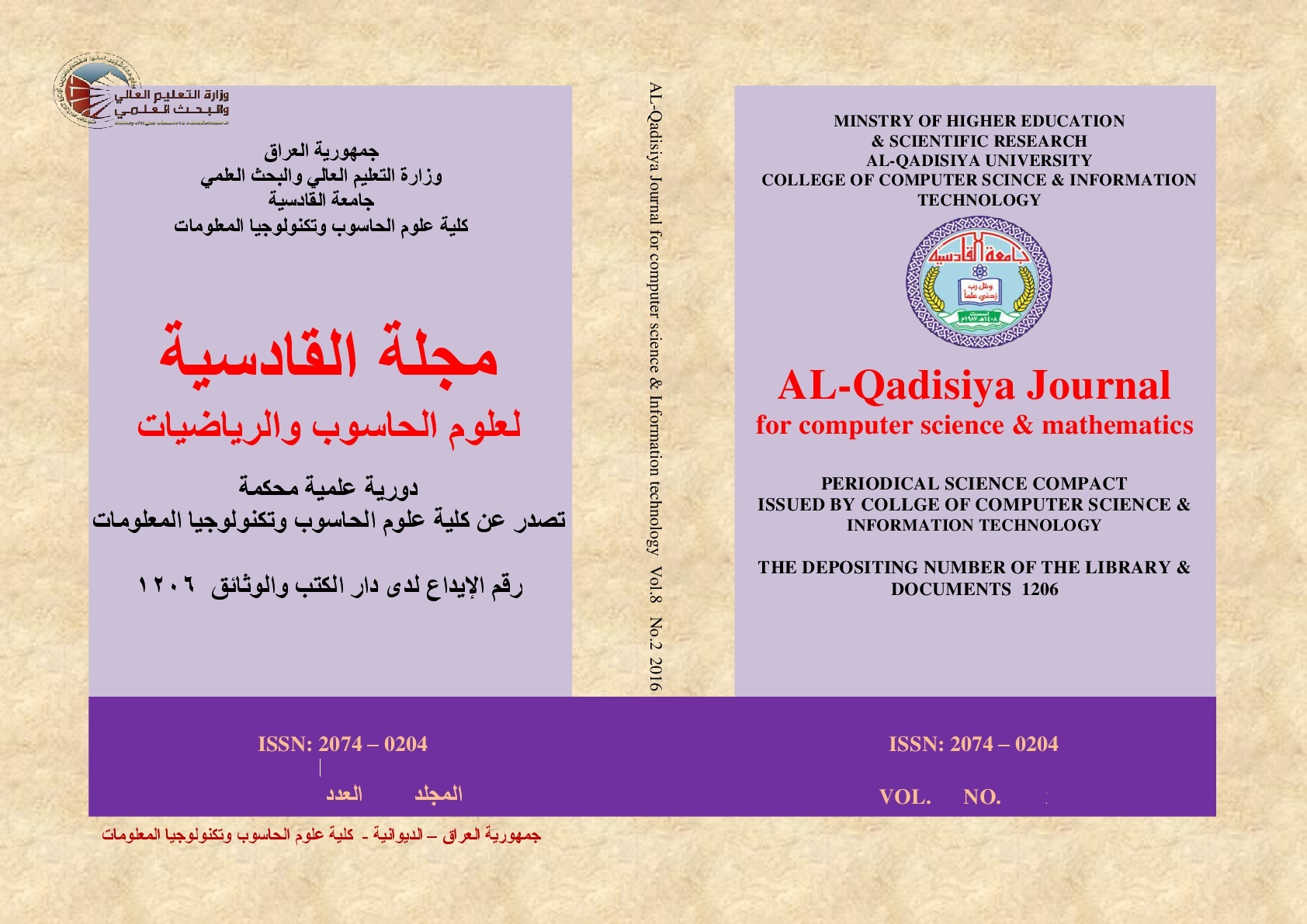Enhanced Malware Detection for IoT Networks Utilizing a 2D-CNN with Data Augmentation on the Malimg Dataset
DOI:
https://doi.org/10.29304/jqcsm.2025.17.11973Keywords:
Internet of Things (IoT), Convolutional Neural Network, Deep learning, Cybersecurity, Malware detectionAbstract
With the swift growth of the Internet of Things (IoT), the attacker’s threat surface has increased multi-fold, making IoT networks a hotbed for multiple malware types. IoT networks’ ever-changing and diverse structures make it almost impossible for traditional malware detection systems to effectively identify and classify hostile traffic in real-time. One viable approach to solving the issue is training Convolutional Neural Networks (CNNs) with data augmentation techniques, as expanding the dataset could help improve IoT malware detection by enabling better classification of distinct malware traffic patterns. In order to enhance detection performance, the authors of this paper suggest a unique two-dimensional (2D) CNN architecture that is tailored for the Malimg dataset and incorporates data augmentation techniques. The suggested method offers a major improvement over other studies that used manually designed dataset-specific characteristics for malware classification by automatically extracting features straight from the infected pictures. By minimizing overfitting, this technique allows the model to train efficiently over a mere ten epochs. The model is better able to generalize and adjust to a greater range of malware samples by employing data augmentation. The outcome of the model built on the Single-CNN architecture performs better than other established models like DenseNet, VGG16, and the VBDN framework obtained an accuracy of 98.86%. The paper included comparative graphs and line plots, bar charts and pie charts demonstrating effectiveness of the proposed model and its original version. These outcomes emphasize the value of domain specific optimizations to solve intricate problems of malware detection and cybersecurity. These results put attention to sophisticated techniques needed to solve malware detection problems in IoT networks and underscore the need for evolving methodologies for these emerging issues.
Downloads
References
K. Shaukat, S. Luo, V. Varadharajan, I. A. Hameed, and M. Xu, “A Survey on Machine Learning Techniques for Cyber Security in the Last Decade,” IEEE Access, vol. 8, 2020, doi: 10.1109/ACCESS.2020.3041951.
“On certain integrals of Lipschitz-Hankel type involving products of bessel functions,” Philos. Trans. R. Soc. London. Ser. A, Math. Phys. Sci., vol. 247, no. 935, 1955, doi: 10.1098/rsta.1955.0005.
AV-TEST Institute, “AV-TEST Malware statistic,” Av-test, 2021.
A. M. Abbass and R. S. Fyath, “Performance investigation of geometric constellation shaping-based coherent WDM optical fiber communication system supported by deep-learning autoencoder,” Results Opt., vol. 15, no. August 2023, p. 100629, 2024, doi: 10.1016/j.rio.2024.100629.
Y. LeCun, Y. Bengio, and G. Hinton, “Deep learning. Nature,” Nature, vol. 521, no. 7553, 2015.
“Statement of Retraction: A Survey on Malware Detection and Classification (Journal of Applied Security Research, (2021), 16, 3, (390-420), 10.1080/19361610.2020.1796162),” Journal of Applied Security Research, vol. 18, no. 3. 2023. doi: 10.1080/19361610.2022.2039530.
M. I. P. Salas, P. L. de Geus, and M. F. Botacin, “Enhancing Malware Family Classification in the Microsoft Challenge Dataset via Transfer Learning,” in ACM International Conference Proceeding Series, 2023. doi: 10.1145/3615366.3615374.
A. S. Bozkir, A. O. Cankaya, and M. Aydos, “Utilization and comparision of convolutional neural networks in malware recognition,” in 27th Signal Processing and Communications Applications Conference, SIU 2019, 2019. doi: 10.1109/SIU.2019.8806511.
M. Ahmadi, D. Ulyanov, S. Semenov, M. Trofimov, and G. Giacinto, “Novel feature extraction, selection and fusion for effective malware family classification,” in CODASPY 2016 - Proceedings of the 6th ACM Conference on Data and Application Security and Privacy, 2016. doi: 10.1145/2857705.2857713.
S. N. Swamy and S. R. Kota, “An empirical study on system level aspects of Internet of Things (IoT),” IEEE Access, vol. 8, 2020, doi: 10.1109/ACCESS.2020.3029847.
M. Brahma et al., “Learning impact of recent ICT advances based on virtual reality IoT sensors in a metaverse environment,” Meas. Sensors, vol. 27, 2023, doi: 10.1016/j.measen.2023.100754.
S. Kirmani, A. Mazid, I. A. Khan, and M. Abid, “A Survey on IoT-Enabled Smart Grids: Technologies, Architectures, Applications, and Challenges,” Sustainability (Switzerland), vol. 15, no. 1. 2023. doi: 10.3390/su15010717.
D. Peraković, M. Periša, and P. Zorić, “Challenges and issues of ICT in industry 4.0,” in Lecture Notes in Mechanical Engineering, 2020. doi: 10.1007/978-3-030-22365-6_26.
N. Mangala, K. R. Venugopal, and B. Eswara Reddy, “Short Paper : Current Challenges in IoT Cloud Smart Applications,” in Proceedings - 2021 IEEE International Conference on Cloud Computing in Emerging Markets, CCEM 2021, 2021. doi: 10.1109/CCEM53267.2021.00016.
D. Y. Kulkarni, G. Lu, F. Wang, and L. Di Mare, “Virtual gas turbines part I: A top-down geometry modelling environment for turbomachinery application,” in Proceedings of the ASME Turbo Expo, 2021, vol. 2C-2021. doi: 10.1115/GT2021-59719.
J. Al Faysal et al., “XGB-RF: A Hybrid Machine Learning Approach for IoT Intrusion Detection,” Telecom, vol. 3, no. 1, 2022, doi: 10.3390/telecom3010003.
V. Gugueoth, S. Safavat, S. Shetty, and D. Rawat, “A review of IoT security and privacy using decentralized blockchain techniques,” Computer Science Review, vol. 50. 2023. doi: 10.1016/j.cosrev.2023.100585.
J. Hemalatha, S. A. Roseline, S. Geetha, S. Kadry, and R. Damaševičius, “An efficient densenet‐based deep learning model for Malware detection,” Entropy, vol. 23, no. 3, 2021, doi: 10.3390/e23030344.
N. Pachhala, S. Jothilakshmi, and B. P. Battula, “Enhanced Malware Family Classification via Image-Based Analysis Utilizing a Balance- Augmented VGG16 Model,” Trait. du Signal, vol. 40, no. 5, 2023, doi: 10.18280/ts.400534.
H. Naeem, “Detection of Malicious Activities in Internet of Things Environment Based on Binary Visualization and Machine Intelligence,” Wirel. Pers. Commun., vol. 108, no. 4, 2019, doi: 10.1007/s11277-019-06540-6.
F. M. J. Mehedi Shamrat et al., “An advanced deep neural network for fundus image analysis and enhancing diabetic retinopathy detection,” Healthc. Anal., vol. 5, 2024, doi: 10.1016/j.health.2024.100303.
M. ElKashlan, M. S. Elsayed, A. D. Jurcut, and M. Azer, “A Machine Learning-Based Intrusion Detection System for IoT Electric Vehicle Charging Stations (EVCSs),” Electron., vol. 12, no. 4, 2023, doi: 10.3390/electronics12041044.
N. Bhodia, P. Prajapati, F. Di Troia, and M. Stamp, “Transfer Learning for Image-based Malware Classification,” in International Conference on Information Systems Security and Privacy, 2019. doi: 10.5220/0007701407190726.
M. Azizjon, A. Jumabek, and W. Kim, “1D CNN based network intrusion detection with normalization on imbalanced data,” in 2020 International Conference on Artificial Intelligence in Information and Communication, ICAIIC 2020, 2020. doi: 10.1109/ICAIIC48513.2020.9064976.
A. Krishnan and S. T. Mithra, “A Modified 1D-CNN Based Network Intrusion Detection System,” Int. J. Res. Eng. Sci. Manag., vol. 4, no. 6, 2021.
L. Zhao et al., “T-GCN: A Temporal Graph Convolutional Network for Traffic Prediction,” IEEE Trans. Intell. Transp. Syst., vol. 21, no. 9, 2020, doi: 10.1109/TITS.2019.2935152.
M. Zhan, J. Gan, G. Lu, and Y. Wan, “Graph convolutional networks of reconstructed graph structure with constrained Laplacian rank,” Multimed. Tools Appl., vol. 81, no. 24, 2022, doi: 10.1007/s11042-020-09984-2.
S. Lawrence, C. L. Giles, A. C. Tsoi, and A. D. Back, “Face recognition: A convolutional neural-network approach,” IEEE Trans. Neural Networks, vol. 8, no. 1, 1997, doi: 10.1109/72.554195.
Stepanov S, Spiridonov D, Mai T (2023) Prediction of numerical homogenization using deep learning for the Richards equation. J Comput Appl Math 424:114980
A. Khan, A. Sohail, U. Zahoora, and A. S. Qureshi, “A survey of the recent architectures of deep convolutional neural networks,” Artif. Intell. Rev., vol. 53, no. 8, 2020, doi: 10.1007/s10462-020-09825-6.
Ji X, Yan Q, Huang D, Wu B, Xu X, Zhang A, Liao G, Zhou J, Wu M (2021) Filtered selective search and evenly distributed convolutional neural networks for casting defects recognition. J Mater Process Technol 292:117064.
A. Saxena, “An Introduction to Convolutional Neural Networks,” Int. J. Res. Appl. Sci. Eng. Technol., vol. 10, no. 12, pp. 943–947, 2022, doi: 10.22214/ijraset.2022.47789.
N. Aloysius and M. Geetha, “A review on deep convolutional neural networks,” Proc. 2017 IEEE Int. Conf. Commun. Signal Process. ICCSP 2017, vol. 2018-Janua, no. November, pp. 588–592, 2017, doi: 10.1109/ICCSP.2017.8286426.
T. A. Kalaycı and U. Asan, “Improving Classification Performance of Fully Connected Layers by Fuzzy Clustering in Transformed Feature Space,” Symmetry (Basel)., vol. 14, no. 4, 2022, doi: 10.3390/sym14040658.
L. Nataraj, S. Karthikeyan, G. Jacob, and B. S. Manjunath, “Malware images: Visualization and automatic classification,” in ACM International Conference Proceeding Series, 2011. doi: 10.1145/2016904.2016908.
A. Roshanzamir, H. Aghajan, and M. Soleymani Baghshah, “Transformer-based deep neural network language models for Alzheimer’s disease risk assessment from targeted speech,” BMC Med. Inform. Decis. Mak., vol. 21, no. 1, 2021, doi: 10.1186/s12911-021-01456-3.
R. Hu, G. Ruan, S. Xiang, M. Huang, Q. Liang, and J. Li, “Automated Diagnosis of COVID-19 Using Deep Learning and Data Augmentation on Chest CT,” medRxiv, 2020.
A. A. Taha and A. Hanbury, “Metrics for evaluating 3D medical image segmentation: Analysis, selection, and tool,” BMC Med. Imaging, vol. 15, no. 1, 2015, doi: 10.1186/s12880-015-0068-x.
D. Chicco and G. Jurman, “The advantages of the Matthews correlation coefficient (MCC) over F1 score and accuracy in binary classification evaluation,” BMC Genomics, vol. 21, no. 1, 2020, doi: 10.1186/s12864-019-6413-7.
H. M and S. M.N, “A Review on Evaluation Metrics for Data Classification Evaluations,” Int. J. Data Min. Knowl. Manag. Process, vol. 5, no. 2, 2015, doi: 10.5121/ijdkp.2015.5201.
Downloads
Published
How to Cite
Issue
Section
License
Copyright (c) 2025 Iman Fadhil Saleh

This work is licensed under a Creative Commons Attribution-NonCommercial-NoDerivatives 4.0 International License.













